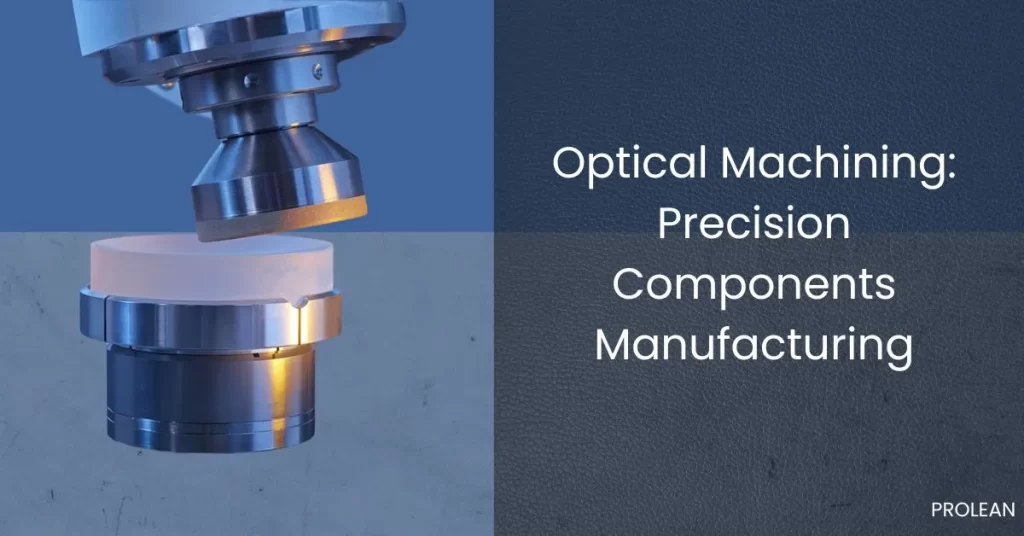
Optimal Machining
What happens if light bends just a fraction more than intended through a lens? The image blurs. And what if a mirror is polished unevenly by a few nanometers? A telescope fails to capture detail.
In optics, the smallest error can disrupt the entire function. Prolean focuses on optical machining services that go beyond standard cutting and polishing. With advanced CNC precision, Prolean ensures every lens, prism, and mirror meets the strictest optical standards.
Precision optics serve industries where accuracy is not optional but essential. Optical manufacturers ensure that aerospace, medical imaging, and defense systems receive components built to the highest standards.
Here in the following guide, you will see what sets optical machining apart, the materials and methods behind it. Also, you will know how industries use it today and in the future
Why Is Optical Machining Different?
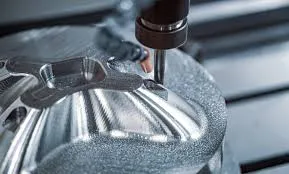
Optical CNC Machining
Optical machining is not merely the shaping of a piece of material. It involves accuracy to such an extent that a micron or fraction of a micron may be essential. Traditional machining tolerances of several microns are satisfactory. Optical components, however, require surface finishes measured in angstroms or just a few nanometers, often as fine as 1-5 nm for high-end mirrors.
The difficulty lies in the functions the parts are executing. Mirrors, lenses, and prisms should direct light without distortion. Even the tiniest imperfection of a surface can reflect light and weaken the performance. Thus, the machining operation has to strike a balance between material removal and very high control.
The other point of difference is the tools and techniques. The required accuracy cannot be provided with traditional end mills or drills. Rather, there are single-point diamond turning, magnetorheological finishing, etc., and ion-beam figuring are used. Both of these processes are sub-micron.
Common Materials for Optical Machining
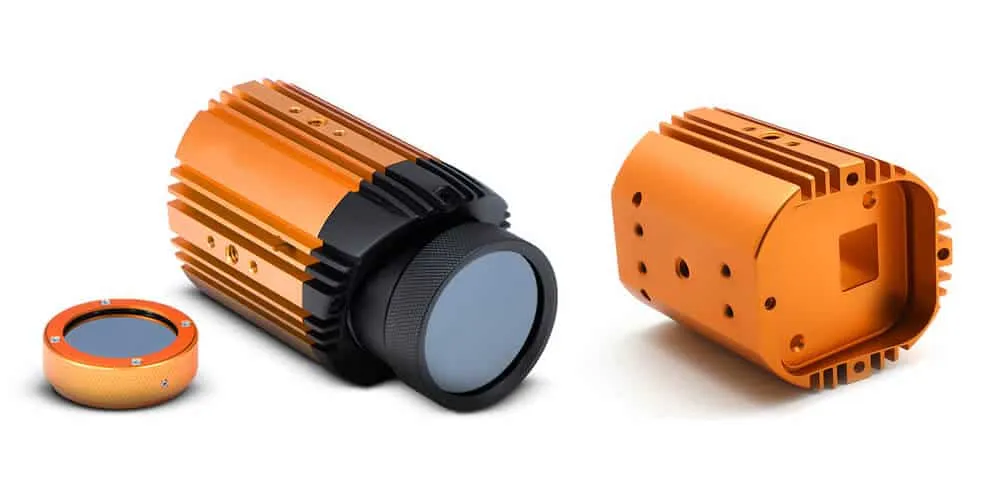
Optical CNC Components
The correct selection of the material in optical machining is important. The response of each material to heat, polishing, and cutting forces varies. Hence, you need to ensure that you match the operating environment and performance demanded with the material.
1. Through Glass and Crystalline Materials
Stability and transparency are combined in fused silica and BK7. These are often used as lenses and prisms. It makes glass machining a critical step in achieving precise optical components.
2. Optical Metals
Optics is highly dependent on metal parts. Aluminum is not only lightweight and easy to machine, but it is also used extensively as a housing, mirror, and frame material.
When high thermal stability is needed and high reflectivity, copper and nickel-phosphorus coatings are used. Titanium has been preferred in aircraft and military optics because it has high strength-to-weight ratios and is resistant to corrosion.
3. Plastics and Polymers in Optics
As a lightweight or impact-resistant material, acrylic or polycarbonate is widely utilized and is typically shaped using acrylic machining. These materials can be accurately and successfully formed into complex support components thanks to plastic machining. Despite not having the optical perfection of glass, they are commonly used in consumer electronics, eyewear, and prototypes.
Methods of Optical Machining
Optical machining is not characterized by one process. Various applications require varying methods. The lens that is used in medical imaging does not need the same process as a telescope or the aperture of a laser.
This is why optical products manufacturers have to make use of a combination of machining techniques. It is all adapted to geometry, tolerance, and performance needs.
1. CNC Turning and Milling
Optical manufacturing depends on the use of CNC devices. Cylindrical parts that are also good for turning include lens housings, rings, and adjustment mechanisms.
Milling gives these same parts flat surfaces, slots, and other more complicated shapes. They can be combined to create useful and substantial frames for mounts, mirrors, and lenses.
2. Ultra-Precision Machining
Ultra-precision machining is critical when the tolerances are under one micron. These are highly developed CNC machines that make use of diamond tools to shape complex shapes.
The technique is used to create diffraction gratings, free-form lenses, microfluidic channels, and various other complicated optical surfaces. What is produced is a smooth, non-distorted optic that can be used in demanding applications.
3. Diamond Turning

Diamond Turning
Diamond turning is a reliable technique for producing rotationally symmetric optics. A tool that has a diamond tip cuts with sharp precision and leaves a surface that is frequently smooth enough to need no or minimal polishing. Standard outputs are scanner mirrors, lenses of the sphere, and infrared optics.
4. Laser Cutting
Laser cutting works best for thin optical components like aperture masks or metal foils. Fiber lasers handle metallic materials efficiently, while UV lasers are mainly used for polymers.
Laser cutting works best for thin optical components like aperture masks, metal foils, and polymer gaskets. On the other hand, fiber lasers handle metal parts effectively, while UV lasers are ideal for non-metal materials in precision laser cutting.
However, when comparing plasma vs laser cutting, lasers are preferred in optics. It is because they minimize thermal damage and achieve the fine tolerances required. The process has been extensively applied to support components to frame or protect fragile optical components.
A few Industry Examples
These practices have been felt within all industries.
- Consumer electronics: Smartphone cameras, sensors, and projectors are based on precision optics.
- Armed forces and Aircraft: Guidance systems, telescopes, and targeting devices need durability and optical sharpness.
- Automotive: AV lidar applications require distortion-free optics.
- Medical: Diagnostic tools, surgical lasers, and endoscopes require a high degree of precision machining due to their high safety and accuracy in operation.
Standards and Compliance
Precision optical machining is subject to strict regulations. Manufacturers are required to meet ISO 9001: 2015 on quality management and ASTM on materials. These optical parts are generally military grade and meet the requirements of MIL-PRF-13830B on optical performance and MIL-STD-810 on environmental service life.
There are environmental laws like the RoHS and the REACH that restrict any harmful substances and chemicals. These designs are performance, safety, and sustainability-oriented designs.
Try Prolean Now!
Process Behind the Optical Machining
Optical machining is a very specialized process that transforms raw material into precision optics and other supporting components. It is not like general machining as it requires precision to the last drop, as any mistake as minute as a microscope may affect performance. From consumer goods to aerospace systems, each process is strictly regulated to achieve high standards.
Here’s the complete breakdown of the process involved:
1. Material Selection
It begins by selecting an appropriate material to be used. Lenses and optical systems are still made of glass. Everyday eyewear is commonly made of polycarbonate, whereas laser and high-energy uses are usually made of quartz.
Metals, including aluminum, titanium, or steel, are employed in support components like housings or frames as they are powerful and resilient.
2. Preparing Raw Materials
After selecting the material, it is cut into pieces that can be worked with. This step is done to make sure that the size and shape are ready to be precision-machined.
3. Precision Machining
Machining is the core of the process. The common methods that are classified under the group of precision machining are CNC milling, CNC turning, and diamond turning. Because of the micro-level accuracy provided by these technologies, lenses and other components meet exact requirements.
3-, 4-, and 5-axis CNC machines produce figures in challenging geometries that are impossible to produce using traditional techniques.
4. Refining the Optics
The pieces undergo grinding, polishing, and coating once they are machined. This makes lenses crystal clear by smoothing off rough areas. The procedure improves light transmission, clarity, and durability in addition to forming the lens.
5. Testing and Quality Control
All the optical components have been well tested. High-precision measurement systems are used to test surface, dimensions, and performance. These inspections are important in fields like medicine, aerospace, and transportation, where reliability is especially important to life.
6. Production Manufacturing
After prototypes are passed, the process goes to production. Manufacturers can produce mid- to massive batches depending on the demand and have an equal degree of precision on each piece.
7. Supporting Optical Components
Besides lenses, optical machining also produces the support components that bear the optical elements. Such are housings, apertures, shims, and other associated elements. CNC machining is capable of a tolerance of ±0.001 inch. It means that every single part will fit perfectly into optical assemblies. After the parts have been made, anodizing, powder coating, or electropolishing is usually done. These procedures enhance performance and increase life span.
Applications Beyond the Obvious
Optical machining does more than serve obvious hardware needs. It quietly enables capabilities that reshape whole fields. Below are three examples that show how precise optics translate into real technical gains:
1. Semiconductors & Photonics
![]()
Optical Semiconductors
Photonics is moving onto chips. Waveguides, micro-lenses, and fiber-coupling optics need extreme precision. Tolerances tighten to the nanometer scale. Surface roughness and edge quality directly affect signal loss. Machined optics here must support low-loss light paths.
Wafer-level optics and micro-optic assemblies often require hybrid workflows. That means ultraprecision turning, deterministic polishing, and tight metrology. Small form factors and repeatability are critical. Volume can be high, so process stability matters as much as absolute accuracy.
2. Renewable Energy
Optical components play a central role in concentrated solar and light-directing systems. Fresnel lenses, secondary concentrators, and reflector arrays must efficiently focus sunlight.
Even small surface errors reduce system output. Materials also matter. Outdoor optics need UV-stable substrates and durable coatings. Cost per unit must balance optical performance and weather longevity.
Machining combined with protective coatings and controlled surface finish is a common solution. Design for manufacturability helps cut lifecycle cost while preserving optical efficiency.
3. AR/VR & Consumer Tech
AR and VR push optics into tiny, lightweight packages. Aspheres, freeform lenses, and waveguides are standard. Speed to prototype is crucial. Early-stage projects favor machined prototypes before moving to molded production.
Polymers and hybrid glass/polymer stacks are common choices. Tight centration and low distortion are non-negotiable for comfortable user experiences. High-volume production often shifts to injection molding, but optical machining stays essential for tooling, masters, and low-volume high-performance builds.
Try Prolean Now!
Future of Optical Machining
Optical machining has a very promising future. New tools, superior materials, and smarter processes will steer it. The following trends are anticipated to dominate the upcoming decade.
1. Closed-loop Control & In-Process Metrology
The future advanced tools will be tightly related to both design and optical manufacturing. Not only can machines cut and polish, but they can also measure and adjust settings as needed.
Rework and lead times are reduced by the machine’s ability to fix any mistakes before the product leaves the machine spindle.
2. AI-Driven Optimization & Predictive Maintenance
Artificial intelligence and advanced control will assist in fine-tuning toolpaths and polishing strategies. The optimization cycles by trial and error are avoided by training algorithms on which sequences give the best surface quality of each material.
Predictive maintenance keeps the equipment fault-free, and the company does not spend a lot of money on downtime.
3. Nanofabrication and Micro-Optics
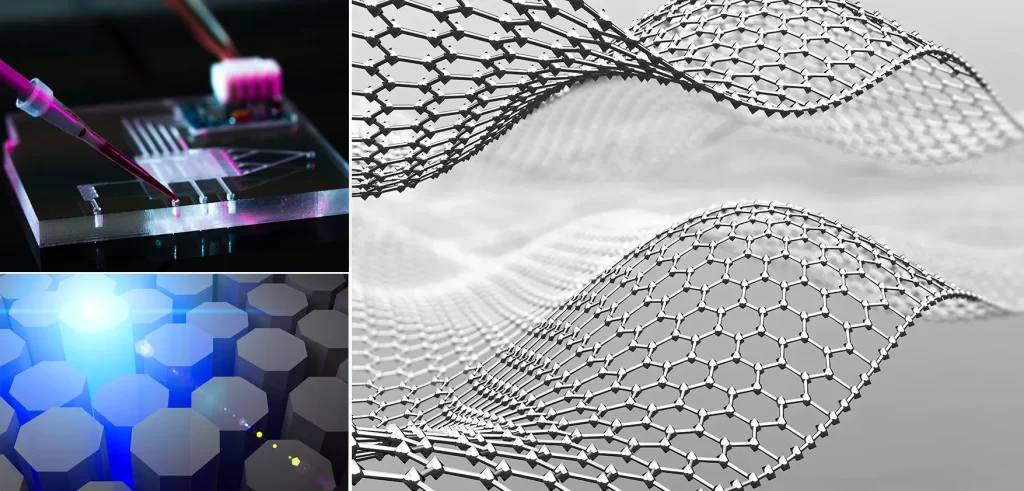
Nano Fabrication
Simultaneously, the methods of nanofabrication will become accessible to common usage. Lithography, etching, and other micro-fabrication techniques will be complemented by ultraprecision machining.
It will allow much more compact and dense photonic devices, and smaller and more capable optics. Micro-lenses, metasurfaces, and wafer-level optics will be simpler to manufacture at a uniform quality.
4. Material Stewardship Sustainability
Sustainable decisions will have an impact on all the processes. Manufacturers will embrace the use of greener coolants. It is their ability to capture waste and have high-value substrates recycled regularly. The manufacturers will consider life-cycle impact with consideration of cost in the choice of materials and finishes.
5. Hybrid Manufacturing & Digital Twins
The hybrid production will speed up the process and increase the choices. Additive processes will be used to create near-net forms, and the final precision will be achieved by subtractive finishing. Digital twins and simulation also allow the teams to predict outcomes prior to the initial cut.
Conclusion
Optical machining is not simply about shaping materials, but about building components that can direct light with flawless accuracy. A minor imperfection can undermine performance in fields where precision is not optional.
From medical imaging to aerospace, the role of advanced machining methods will only grow as demands rise. Success in this field depends on combining material knowledge, process control, and rigorous testing into one seamless workflow.
From optical prototypes to mass production, Prolean provides production of optical products of the highest precision. Whatever is required, our specialists make sure that everything is constructed to work.
Get in touch, and we will provide an instant quote and talk to you about your project.

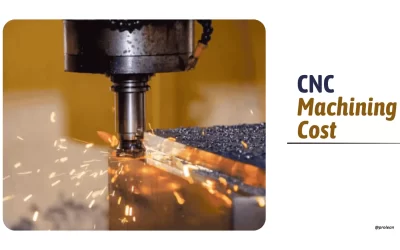
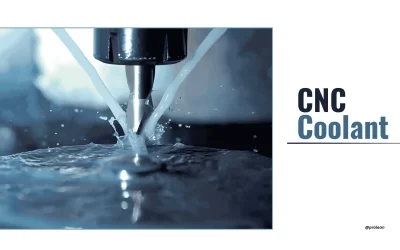
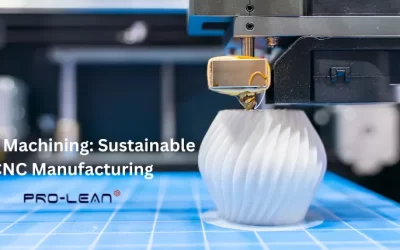
0 Comments